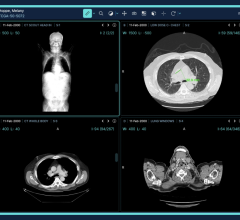
The need to protect patient images and other clinical data from disasters is increasing, just as doing so is getting tougher.
Two providers — a multisite outpatient radiology clinic in Texas, the other a health services clinic and hospital in Tornado Alley 1,000 miles away in Nebraska — reported on their solutions for doing so at the 2018 Healthcare Information and Management Systems Society (HIMSS) conference. Although each chose different approaches, both rely heavily on the cloud.
Pragmatism has drawn their paths together.
Austin Radiological Association (ARA), a chain of imaging clinics headquartered in Austin, Texas, chose initially to go all-in on the cloud. The decision was based partly on the recognition that on-premise storage equipment was about to come off OEM maintenance, explained R. Todd Thomas, ARA chief information officer. Contributing to the decision was the understanding that 3-D breast tomography — with its extensive storage requirements — was soon coming to ARA. Administrators had to decide, said Thomas, “Do we buy more on-premise storage or can we try to put all this in the cloud and never have to deal with capital purchases again?” ARA chose the latter.
Faith Regional Health Services, comprised of a hospital and multiple outpatient clinics in Norfolk, Neb., chose a more conservative approach — a hybrid solution that mixes on-premise and cloud storage. Administrators there opted to use the cloud to store only certain data as well as a full data backup. They decided to continue storing radiology data on-premise partly because of an existing maintenance contract, according to IT Director Paul Feilmeier. He said a comprehensive transition to the cloud will not happen at Fair Regional until maintenance contracts associated with on-premise archives are ready to expire.
Choices by Faith Regional and ARA both hinged on business considerations. An unanticipated challenge, however, led ARA to keep its on-premise storage longer than expected.
Embracing The Cloud
Latency issues were at the root of this extension. At first, download delays were untenable for the retrieval of images from prior exams, according to Thomas. This was resolved, however, by changing the workflow, he said. Radiologists began “pre-fetching” prior images, he said, in preparation for their interpretation of current exams.
In its march to the cloud, ARA — a chain of radiology clinics — has prioritized the cloud storage of images. But eventually all clinical data will be on the cloud, Thomas said. “We have a cloud-first strategy. As departments come to us with different ideas,” he said. “The first thing we ask them is: Can this run on the cloud?”
Faith Regional is similarly enthused about using the cloud for storage, even though it plans to continue using on-premise archives for the next few years. “I think the cloud will become the future, although I feel like the hybrid solution is right in the short term,” Feilmeier said.
Faith Regional will transition completely to the cloud when on-premise hardware need to be “refreshed,” he said. It is important, when planning future storage, to consider capital investments and equipment service, particularly in the context of budget, Feilmeier explained.
Considering Options
Making the cloud especially appealing is the potential for savings. Both Faith Regional and ARA have determined that the cloud storage has reduced their costs per terabyte. In its hybrid approach, Faith Regional projected that the costs for capital and cloud storage would be about equal by the end of 2018, a prediction that in early 2018 appeared to be on track. Cost savings at Faith Regional are projected to continue through 2019 and into later years.
Quick scaling made possible by the cloud allowed ARA to cut back significantly on local archives, said Thomas, producing “a 35 percent savings in our first year.” But these savings did not come without effort.
ARA has learned that “not all files are created equally,” Thomas said. Some files, particularly large ones, can be difficult to handle. “But edge devices can be tweaked to ensure against problems,” he said.
Although latency also was a problem, ARA radiologists overcame the challenge by prefetching mammograms from the cloud to their workstations, “so when they come to work the next morning, they can call up a display,” Thomas said.
Faith Regional built this prefetching workaround into its workflow from the start. Or they depend on radiologists to be patient. If radiologists “need a study from five years ago, they have to wait a few minutes to get it,” Feilmeier said. “I think they are OK with that, so long as they understand that up front.”
Looking Ahead
Feilmeier and Thomas agreed that the leaders of business units should be involved when planning a long-term storage approach. Said Thomas, “Where we think some things are super easy, the business units may not necessarily think that way.”
Greg Freiherr has reported on developments in radiology since 1983. He runs the consulting service, The Freiherr Group.


 July 26, 2024
July 26, 2024 








